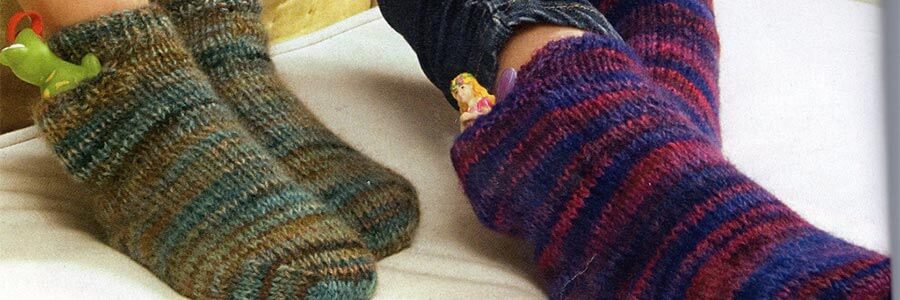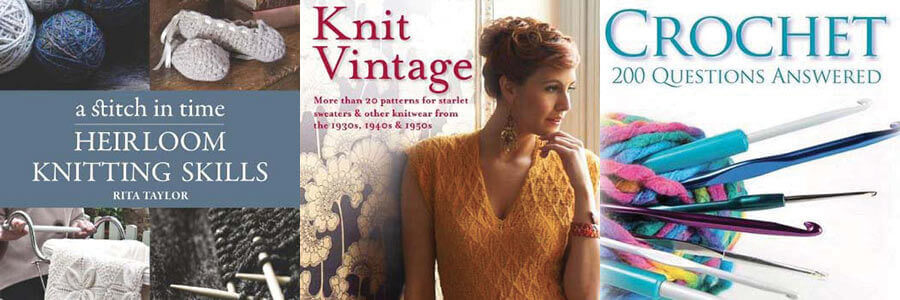Individual knitwear created especially for you
Knitting is an important part of our cultural history and I do my best to preserve and promote these long-established techniques. Many of my designs are based on the timeless traditional knits of the British Isles but with a modern twist to suit the current style. My favourite pieces are Fair Isle, Aran, Fishermen’s Ganseys. Shetland Lace, Sanquhar and Fishermen’s Ganseys.
I am involved with the Sheringham Museum in promoting the ganseys of East Anglia and have designed gansey inspired kits to be sold in their shop.
A BIT ABOUT GANSEYS Before patterns were printed, when knitting was a necessity or a valuable addition to the income of a family, instructions were handed on by word of mouth or copied by sight. The thousands of Scottish girls who followed the herring fleets down the East coast of Scotland and England were adept at “pinching” new stitch patterns for their menfolks’ ganseys. Some of the patterns occur many times in the various fishing towns and villages especially along the East and North East coasts of England and the East coast of Scotland.
However, although there are many stitch patterns, the basic gansey shape is the same everywhere. It is basically loose and square to allow freedom of movement and ease of repair. The type of yarn and the mode of working makes them warm (combinations of knit and purl stitches side by side trap more air as the loops lie in different directions) and hardwearing. They are traditionally knitted in navy 5ply wool on fine needles (14s/2mm being the most common) with about 12sts and 20rounds to the inch.
Ganseys were always working garments and similar square shaped sweaters were also worn by those working on the land. But the gansey as we know it today will always be associated with the sea and the small fishing ports.
A LITTLE BIT ABOUT ARANS
There are many opinions on the origin of Aran knitting but the truth is that it is a reasonably young tradition. However, a tradition it is and people do have an idea of what constitutes a typical Aran sweater. It is a comfortable fit, usually made from a fairly thick, undyed, cream wool and features vertical patterns of crossing stitches, some of which look like ropes, some diamond shapes and some criss-crossed like ribbons. Traditionally there is a wide central panel flanked by bands of cables (the rope-like patterns). Some garments are decorated with bobbles. It is a unisex garment and can be made as a jumper or cardigan in all sizes to fit babies to adults.
On the Aran Islands, as well as farming, fishing was also an important means of providing food for the islanders. The men would fish from small boats, known as curraghs, and there is documentary evidence from photographs published in 2012 of them wearing what look like machine knitted ganseys similar to those produced by the contract knitters of Guernsey. On the Aran Islands, as well as farming, fishing was also an important means of providing food for the islanders. The men would fish from small boats, known as curraghs, and there is documentary evidence from photographs published in 2012 of them wearing what look like a machine knitted gansey.
However, it is undoubtedly true that some skilled women were able to work cable patterns by hand and to adapt them to the requirements of their own menfolk. The knitters could also increase their repertoire of stitches by copying patterns seen on the ganseys of the boat builders and the women that came with them from England and Scotland
As well as knitting traditional knitwear I also crochet and while I specialise in filet designs, such as those used in narrowboats and gypsy caravans, I have made crochet accessories and wedding dresses.
If you would like to order any items or ask questions about knitting get in touch with me at info@heritagehandknits.co.uk or visit Loveknitting to buy some of my patterns.
Blog
-
I realise I haven't posted for ages, years, in fact. Well, I have been busy writing books.

01 November 2018
New book
-
An awful lot of knitting & crochet

11 December 2015
It’s 3 months since I last posted. How time does fly.
-
It's a long time since I last posted but I've just received a lovely book by Carol Feller.

05 September 2015
Dovestone Hills by Carol Feller

